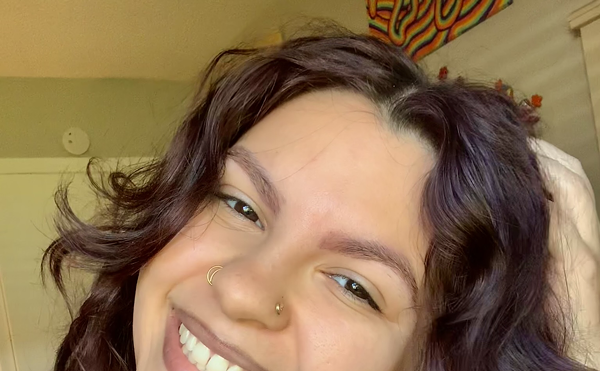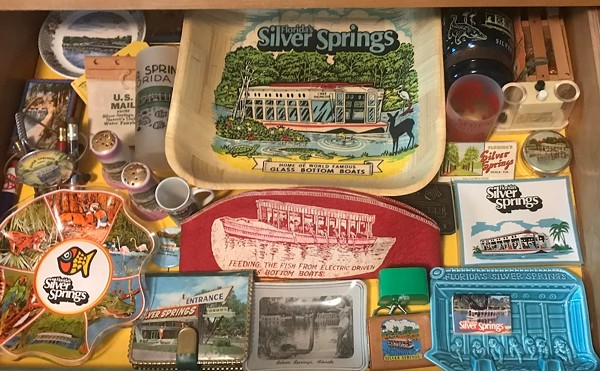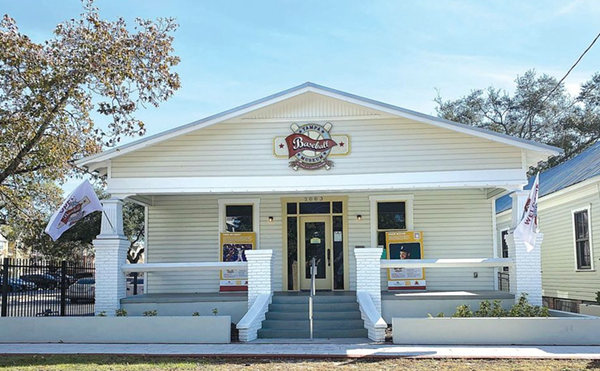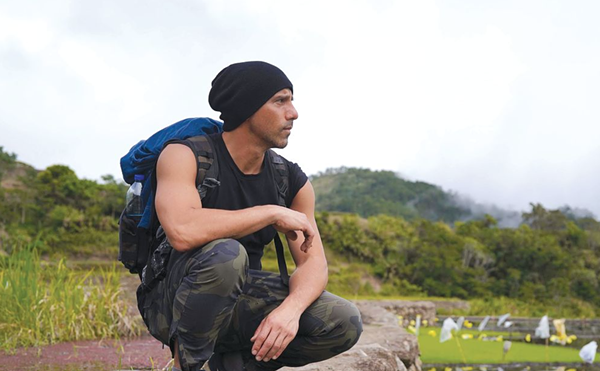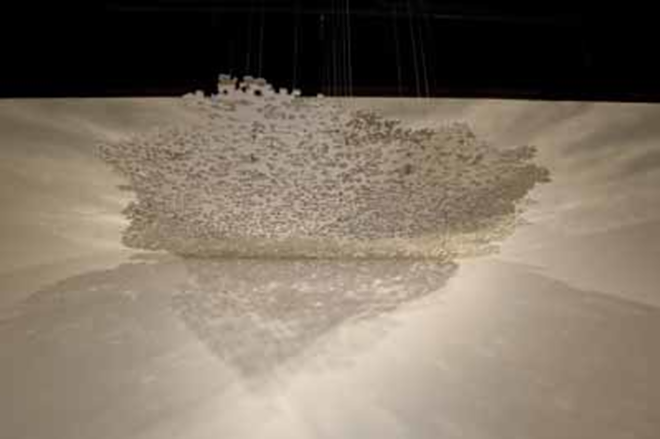
It's one of visual art's under-sung merits that its practitioners often begin any significant endeavor with an inquiry. (That's why almost nothing interesting ever comes from a decision to adopt another artist's style or iconography; one person's "truth" can't be identical to another's.) Great artists like to ask — no, must ask — "Why?" or "What if?". The answers they come up with, of course, don't usually look anything like a literal response to the initial question. Instead, the "answer," transformed through media like ink, oil paint or computer animation, inevitably proposes even more questions.
Among the most basic of such materials is graphite. It's so mundane that even we non-artists probably have some near at hand in the form of a pencil. But in the hands of a skilled artist, humble graphite can, through some mysterious operation, enable meaning and feeling. (Think of the wonder inspired by a Da Vinci sketch.) That an arbitrary material could be at the root of so much significance inspired artist Teresita Fernández to trace graphite back to its source — a vast, natural vein of the mineral near a place called Borrowdale in England, where graphite first began to be mined for use as a drawing material during the Renaissance.
The conceptual offspring of Fernández's explorations — three new works on view in conjunction with a solo exhibition, Blind Landscape, at the University of South Florida Contemporary Art Museum (CAM) — are made almost exclusively from graphite, but they're probably unlike any drawings (or sculptures, or paintings) you've seen before. The New York-based, MacArthur fellowship-winning artist is known for creating immersive, nature-invoking pieces like Epic. Made by painstakingly applying dozens of circular graphite marks to the gallery wall with a fingertip; systematically smudging the marks downward into wispy tails; and mounting a nugget of pure graphite to the wall atop each mark, the subtly three-dimensional expanse alternately suggests a meteor shower, a grouping of clouds and a mountainous landscape — in any case, transcendently beautiful.
For viewers, Epic engenders an unmistakable sense of presence. It suggests a natural phenomenon — one peculiarly at home within the gallery — but also evokes the manual labor required to create so meticulous an achievement. (Fernández excels at this improbable pursuit; prior notable projects include Fire, produced in collaboration with Philadelphia's Fabric Workshop and Museum, an 8-foot-tall ring of hand-dyed fiber in variegated, fiery hues, and Stacked Waters, an outdoor atrium at the Blanton Museum of Art in Texas lined with acrylic laminate that suggests rising levels of lagoon-blue water.) The same emanation of presence makes itself felt in Drawn Waters (Borrowdale), an oversized waterfall or drawn line in sculptural form, constructed as a steep slope of graphite panels punctuated by a pile of graphite chunks at its base. Imagining who or what has drawn such a line and the other "lines" that compose any natural landscape quickly leads to awe-inspiring territory — spiritual territory, even, depending on personal inclination.
CAM curator David Norr uses the delightfully amorphous term "is-ness" to describe the way Fernández's works seem to channel natural presence in altered form. Perhaps nowhere are their reflective and projective qualities more obvious than in a series of sculptures with mirror-like surfaces. Ink Mirror, inspired by the "Claude glass," a tinted, pocket-sized mirror or piece of obsidian popular in the 18th century for permitting artists and landscape devotees to view (and paint) a panorama behind them in muted, "picturesque" tones, presents visitors with a black fiberglass screen. Situated in front of the museum's revolving glass doors and skirted with a mound of white marble dust, the reflective wall offers viewers a familiar-yet-foreign view of themselves and the exterior landscape. (If you really want to jump down a philosophical rabbit hole, consider the implications of Ink Mirror in the context of virtualization. How often do we turn to a simulated reality online, e.g., in the form of Facebook, web browsing or, perhaps less frequently, to Second Life or games like World of Warcraft, to engage simulated worlds that sometimes seem more real than our "real" one?)
Then there's Vertigo, a series of overlapping aluminum panels cut into lace-like patterns that create an overhanging tree canopy, suspended from the gallery ceiling and carefully lit to devise a dazzling multiplicity of shadows. Produced at USF's Graphicstudio — where three-dimensional works, typically multiples, are regularly developed in addition to the printed works on paper the facility is known for — the piece's precise, pale edges were achieved by using a water jet cutter for fabrication. Though Fernández prefers to dwell on the conceptual aspects of her work rather than the technical, particulars like Vertigo's effectively invisible edges illustrate both the impeccable attention to detail that enables the conceptual impact of her pieces and their seamlessly captivating power over viewers. Vertigo, along with its wall-mounted cousin, Portrait (Blind Landscape), did nothing short of teaching me how to look again.
The exhibit, one of the more intensely contemplative shows to alight at the CAM in a while, marks the culmination of several years' work with Fernández. In addition to her Graphicstudio residency and CAM exhibition, plans are afoot for the artist to complete a public art project for the university's Tampa campus. That type of in-depth, multifaceted collaboration with an artist is what USF's Institute for Research in Art (an umbrella title for both Graphicstudio and CAM) does best, says curator David Norr. Now visitors have an opportunity to get to know Fernández, too.





